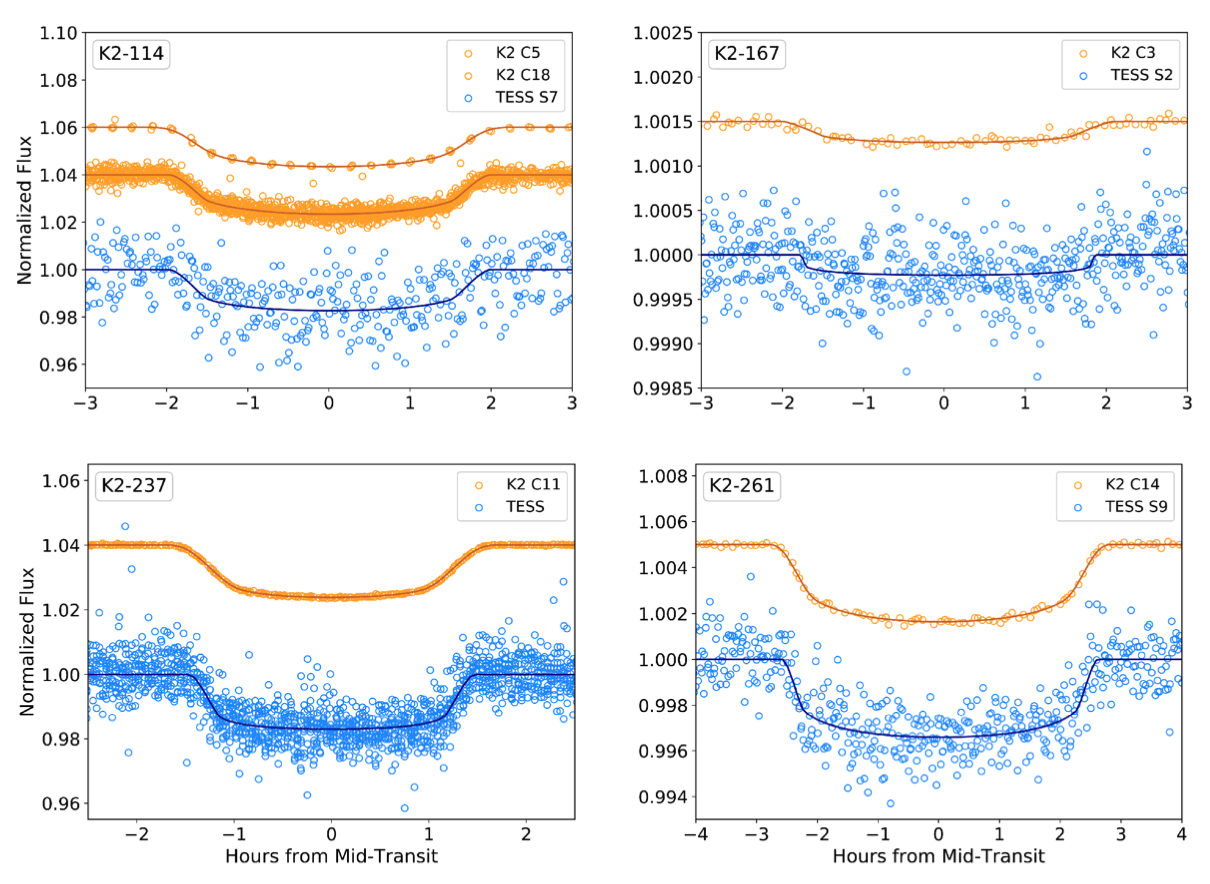STATUS UPDATE: We have started the extended mission! Thanks for everything, prime mission!
Welcome TESS followers to this week's news bulletin! This week we present two papers using TESS data.
The K2 & TESS Synergy I: Updated Ephemerides and Parameters for K2-114, K2-167, K2-237, & K2-261 (Ikwut-Ukwa, et. al., 2020): Within this paper the authors took advantage of overlapping regions within the TESS and K2 missions. From these combined photometric data, and archival spectroscopic observations, they were able to globally model four known planetary systems discovered using K2. The paper provides updated ephemerides and system parameters for K2-114 b, K2-167 b, K2-237 b, and K2-261 b. Three of the planets examined are Jovian sized and one is a sub-Neptune, with orbital periods of less than12 days. The revised ephemeris presented here significantly reduce the uncertainty in the prediction of future times of transit, which is important when considering James Webb Space Telescope observations. The resultant work means that the authors can confidently predict the future transit times to ~1 hr through the extent of the JWST prime mission.
Tess asteroseismology of the known planet host star λ2 Fornacis (Nielsen et. al., 2020): This paper uses TESS observations to characterize the star λ2 Fornacis, and thus update the parameters of the orbiting planet λ2 For b. Fundamental properties of the star are estimated using stellar models. These improved stellar properties are then combined with archival time-series of RV data from the UCLES, HIRES and HARPS instruments spanning almost 20 years, and the orbit of λ2 For b refit. The RV residuals are also examined for remaining variability. The paper determines that λ2 has a mass of 1.16 M⊙ and a radius of 1.63 R⊙, with an age of 6.3 Gyr. The mass of λ2 For b is therefore determined as 16.8 M⊕, which is ~5 M⊕ less than previous literature estimates. The RV measurements also indicate a periodicity of 33 days, this is most likely the rotation of the host star. Asteroseismic measurements place the star at the early stage of the sub-giant evolutionary phase.

Fig 1: Taken from Ikwut-Ukwa et al., (2020). TESS phase folded transit data is represented by the blue points, with K2 as gold. Transit data for K2-114 b are displayed top-left (the two K2 sets represent the 30 min cadence in campaign 5 and then the 1 min cadence in campaign 18), K2-167 b top-right, K2-237 b bottom-left, and K2-261 b bottom-right. For each panel the K2 campaign and TESS sector where the observation occurred is listed. The solid color line on each transit represents the best-fit transit model from the papers EXOFASTv2 global fit. A vertical offset was applied to the K2 data in each system for visual clarity.